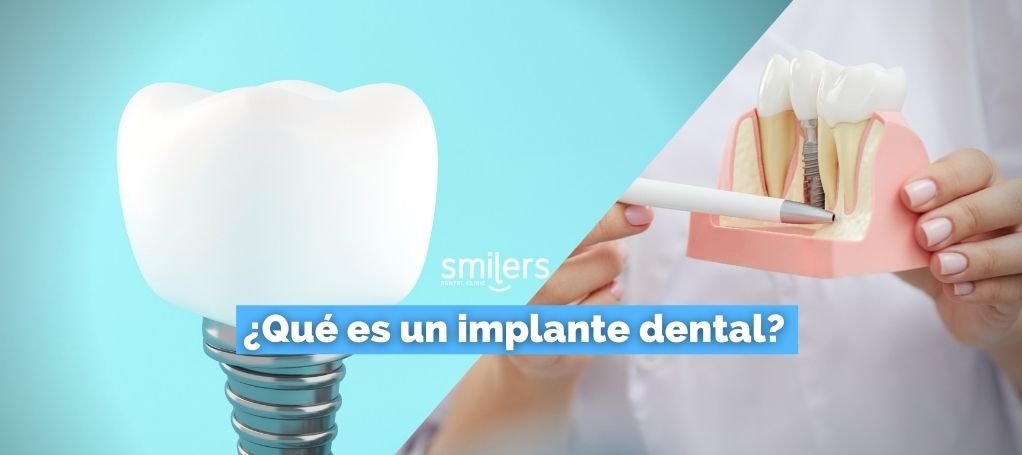¿Qué es el blanqueamiento dental?
Podemos definir el blanqueamiento dental como aquel proceso que tiene como finalidad eliminar las manchas dentales que se alojan en el esmalte así como conseguir conseguir una sonrisa más blanca y brillante. A día de hoy tenemos a nuestra disposición una amplia variedad de técnicas dedicadas al blanqueamiento dental, por lo que cada paciente podrá escoger aquella técnica que mejor se adapte a sus necesidades, siendo de vital importancia que cualquier proceso sea llevado a cabo por un especialista.El blanqueamiento dental más habitual y seguro se lleva a cabo en un consultorio dental.
Consiste en la aplicación de gel blanqueador sobre la superficie del diente (normalmente peróxido de hidrógeno o peróxido de carbamida). Seguidamente se utiliza una luz led o láser para activar el gel y nos ofrece la posibilidad de que el agente blanqueante actúe con mayor rapidez.
Pero antes de hablar de los tipos de procedimientos es importante conocer qué factores determinan el color natural de los dientes.
¿Qué determina el color natural de nuestros dientes?
Si lo imaginamos de adentro hacia afuera, los dientes en si están hechos de “dentina” una sustancia que es la segunda más dura del organismo y constituye la mayor parte del tejido dentario, a nivel de la raíz se halla cubierta por el cemento y en la corona del diente está cubierta por el esmalte. Su color natural es amarillento. El esmalte dentario por su parte es el tejido más resistente del cuerpo y cubre a la dentina en su parte visible en la corona, se compone principalmente de minerales, es de un color amarillo pálido o blanco grisáceo, en función de su grosor y calidad este dejará ver más o menos a la dentina, por lo tanto el color de los dientes depende de la calidad de estos 2 elementos, también habría que tener en cuenta el factor genético que determinaría las variaciones de tonalidad entre diferentes individuos.Tipos de blanqueamiento dental
Existe una diversidad de métodos de blanqueamiento dental, pero lo que todos comparten en común, así como su objetivo, es la acción que ejercen sobre los dientes, que en la mayoría de los casos consiste en desgastar parte del esmalte dentario para así disminuir la tonalidad natural, y brindar un color más blanco y brillante. Esto quiere decir que, el blanqueamiento dental es un procedimiento meramente estético, y no hay realmente motivos de cuidado de salud que lo ameriten, en dado caso existen contraindicaciones para el mismo. De todas formas, aplicado correctamente por un profesional, se reduce al mínimo el riesgo y se evita las complicaciones. ¿Cuáles son las técnicas más comunes?Blanqueamiento en casa
Su nombre solo hace referencia al lugar donde se aplica, pero ello no implica que pueda hacerse sin la prescripción y seguimiento de un odontólogo. Para este tipo de blanqueamiento dental suelen existir dos opciones, la primera de ellas es que el dentista le proporcione al paciente el producto necesario para realizar el tratamiento en casa. Lo primero que se hace es producir unas férulas acordes a la dentadura del paciente, para ellos se toman impresiones de la misma. Dentro de las férulas se aplica un gel blanqueador que también ha de ser proporcionado por el odontólogo, estas se colocan por un periodo de tiempo de aproximadamente 6 u 8 horas al día, durante al menos un mes. La ventaja de este método es que el paciente puede elegir el horario de su conveniencia para utilizar las férulas, evitando así molestias con su rutina diaria, también resulta más económico porque al no requerir de asistencia médica constante se reducen los gastos en honorarios. La segunda opción es adquirir un kit de blanqueamiento dental por Internet.Si bien algunos de los kits que se comercializan hoy en día cuentan con certificados internacionales no te recomendamos esta opción, ya que al no contar con la supervisión de un dentista se corre el riesgo de sufrir efectos secundarios como la sensibilidad dental o dañar el esmalte natural de tus dientes.
Blanqueamiento con un dentista (Método más seguro)
Este si se realiza dentro del establecimiento odontológico y de la mano de personal calificado. Aquí se aplica sobre los dientes un gel especial altamente concentrado, mucho más que los de uso casero, y el efecto de este se potencia mediante la aplicación controlada de una luz LED.Este método suele ser bastante rápido, aproximadamente una hora, y los resultados se observan desde la primera sesión.
¿Cuánto dura el tratamiento de blanqueamiento dental ?
En cuanto a la duración del tratamiento hay que destacar que dependerá de las necesidades que presente cada paciente, que requerirá entre 1 y 3 sesiones (de una duración de 30 a 90 minutos cada sesión) para conseguir los resultados esperados.Es importante destacar que los resultados varían en cada paciente, esto debido a distintos factores como su higiene bucal, tipo de dentadura, y por supuesto el nivel coloración que tienen cuando llegan a consulta, en algunos casos es necesario realizar más de una sesión.
¿Me hago el Blanqueamiento dental en casa o con el dentista?
Si bien los dos anteriores son los más comunes existen otro tipo de blanqueamientos dentales:- Blanqueamiento mixto: es una combinación de los 2 anteriores, se realiza el procedimiento casero y luego en la consulta se potencian los efectos mediante el tratamiento con luces LED, el resultado es como se espera, doblemente eficaz para blanquear los dientes.
- Blanqueamiento interno: ese se utiliza en el caso de piezas dentarias que se han tornado de color oscuro tras habérseles realizado un tratamiento de endodoncia, lo que se busca aquí es devolverle el color natural al diente sea uno o varios para que este en concordancia con el del resto de la dentadura, se requieren varias sesiones. Se coloca un gel en la parte interna del diente y se deja actuar hasta que revierta el problema de coloración.
- Blanqueamiento ambulatorio: Otra de las alternativas que cuentan con una mayor demanda en la actualidad y, en este caso, el tratamiento se lleva a cabo desde casa y cuenta con la supervisión del especialista. Para realizar este proceso es necesario tomar las medidas de la arcada del paciente y se diseña una férula a medida, donde se insertará el gel blanqueador. El paciente deberá llevar la férula durante varias horas al día para conseguir blanquear las piezas dentales.
- Blanqueamiento de piezas no vitales: Cuando hablamos de blanqueamiento tendemos a pensar que únicamente sirve para eliminar las manchas que se alojan en el esmalte, sin embargo existe la posibilidad de que un diente cuente con manchas en el interior del diente, siendo esta una situación que principalmente afecta a aquellas piezas dentales que ya no cuentan con nervio después de un proceso de ortodoncia. A través del blanqueamiento de dientes no vitales podremos disfrutar de una importante mejora de la estética dental, por lo que se trata de una opción altamente demandada por los pacientes. En este caso, el agente blanqueador se inserta en el interior del diente (que deberá permanecer durante unos días) y se colocará un relleno temporal. Una de las particularidades del blanqueamiento en dientes no vitales es que el agente blanqueador se deberá ir cambiando hasta conseguir el tono deseado por el paciente.
What is Teeth Whitening? Everything You Need to Know.
Efectos secundarios del blanqueamiento dental
De igual forma que sucede con la amplia mayoría de tratamientos dentales, hay que advertir una serie de efectos secundarios que pueden aparecer tras un proceso de blanqueamiento. Es importante aclarar que estamos ante efectos leves y temporales, excepto en aquellos casos que el paciente use todo tipo de métodos de dudosa procedencia y calidad, donde los efectos podrían ser mucho más graves. Sensibilidad dental:- La sensibilidad dental es el efecto secundario más habitual del blanqueamiento dental y está causado por la penetración del agente blanqueador en la dentina. Estamos hablando de una situación muy común y que remitirá de forma espontánea en unos días.
- Irritación en las encías: Hablamos ahora de la irritación de las encías como otro de los efectos adversos de un proceso de blanqueamiento, una situación que está causada por la acción del agente blanqueador en el tejido blando. De igual forma que sucede con la sensibilidad dental, la irritación de las encías irá desapareciendo de forma natural a medida de que transcurran los días.
Este post es meramente informativo y no reemplaza en ninguna medida una consulta con el dentista. Comunícate con el equipo de agentes de sonrisas para agendar una cita con uno de los dentistas de Smilers Clínica Dental.



